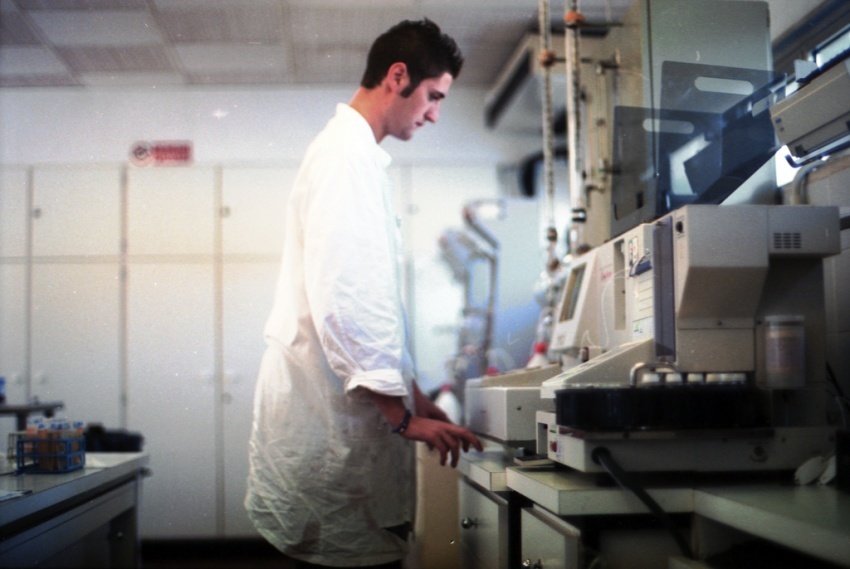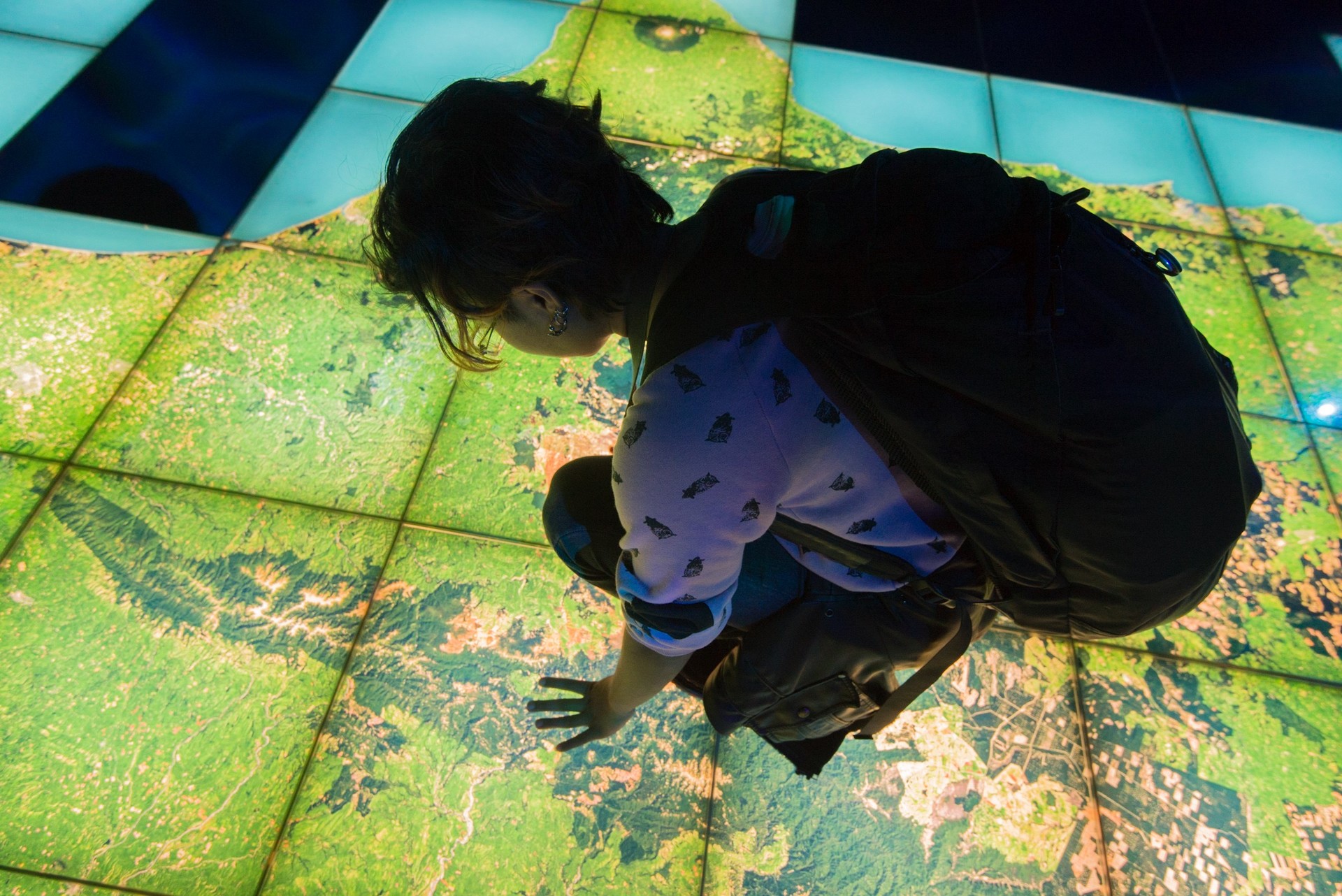IaaS and science: How it works. Part 2

/ Photo 's Matteo Bagnoli CC
The last time we started to talk about the impact of IaaS -technologies in the various scientific fields of activity. Welcome to the second part of the post, where we will talk about how cloud computing helps to conduct research in biology, genetics, geography and medicine.
Biology and genetics
One of the first and most famous cases of using cloud distributed computing is the Human Genome project, completed in 2003. His goal was to determine the sequence of DNA molecules and the identification of 25 thousand individual genes.
The genetic information collected during the project is stored in databases - this is a unique source of knowledge that has been analyzed by scientists of the world so far. The US National Center for Biotechnology Information and its partner organizations in Europe and Japan store genomic sequences in the GenBank database, the Japanese DNA database (DDBJ), or the European EMBL. They hope that this information will help make new discoveries in the fields of genetics and bioengineering.
To maintain their work requires a large amount of computing resources. Therefore, it is not surprising that there was a need to change technical approaches. The community has turned to cloud technology.
The main feature of cloud technologies, which is important for genomic computer science, is the ability to store huge data sets in the cloud. Data is written to virtual disks, which can be connected to virtual machines as regular storage. To date, the entire GenBank database is stored as disk images that users download and upload as they wish.
Cloud computing has also affected the work of developers of applications related to genetic engineering. They got the opportunity to present their products in the form of virtual machines. For example, many gene annotation groups have developed their own processes for identifying and classifying genes and other functional elements. For example, the University of California at Santa Cruz and Ensembl support data and annotations, as well as tools for visualizing and searching genomic sequence databases.
Despite the fact that many of the developed tools remained open, scientists experienced some difficulties in transferring them to other research groups. This was primarily due to differences in program configurations and settings for individual sites. The cloud made it possible to "pack" the created applications into virtual machine images - in this form they are easy to transfer, configure and run, bypassing the software installation process.
Virtualization isolates users from infrastructure and provides flexibility in achieving goals. IaaS offers a full-featured computer infrastructure, providing all kinds of virtualized resources. An example of IaaS in a bioinformatics environment is the development of BioLinux, a public VM for high-performance computing, and CLoVR, a portable VM for automatic sequencing.
Geography
Geographic Information Systems (GIS) is a set of tools that collect, store, analyze, manage and formalize data related to geographic location. GISs play an important role in many fields of activity and are an “alloy” of cartography, statistical analysis, hardware and software.
To manage data, various methods of grouping and transformation are used, for example, bringing geodata to a single scale. To store them, relational databases with reporting technologies are used.
GIS allows querying and analysis of varying complexity: from a simple search for objects on a map, to searching for data using complex patterns, for example, identifying settlements that fall into the affected area in the event of an accident at a nuclear power plant.
The traditional result of processing, analysis and display of spatial geographic data is a map, which is supplemented by reporting documents, relief color images of real and simulated objects, photographs, graphs, charts.
In addition, modern GIS have a large number of special functions designed to make life easier for users. Some of them are also used in navigation systems: finding the shortest path, laying a route, etc.

GIS is often used to make informed decisions based on geospatial data. Cloud implementation has opened up new horizons for researchers and IT organizations using geographic information systems.
GIS cloud systems offer reliable tools that implement the methods of geoinformatics, and powerful software and hardware: open-source geographic servers, devices for generating electronic maps and multi-factor analysis algorithms. Moreover, the use of cloud technology allows you to optimize the process of creating local GIS.
In this case, the company does not need to create a service center and buy its own expensive equipment and, therefore, it is not necessary to keep discussing IT personnel. There is also no need to purchase satellite images and maps from third-party developers by connecting services such as Google Maps and Bing Maps.
All these advantages contribute to the massive transition to cloud technologies in the GIS environment. Organizations such as ESRI and GIS Cloud Ltd have already made the switch to cloud computing, offering users geographic information systems on demand.
Medicine and pharmacology
Cloud technologies have also found their application in medicine. For example, the so-called electronic medical records have become widespread in the world. Electronic Medical Record Card (EMC) stores all the necessary data about patients in digital format on secure remote servers.
Thanks to this, the processing of patients' personal data is facilitated, business processes are optimized: all medical institutions gain access to a person’s medical history, which saves the latter from having to create maps in each clinic.
According to a survey conducted by Accenture among 3700 doctors in eight countries, 70.9% of respondents believe that information technology in medicine improves the quality of clinical trials, and 69.1% noted an increase in the quality of medical care and a decrease in the number of medical errors. And that seems to be true. In US hospitals where EMC is implemented, it takes much less time to treat a patient taken away by ambulance .
Similar trends are observed in Europe. In the province of Andalusia, the global medical information system DIRAYA, built on Oracle infrastructure, operates. This system is contacted by all medical institutions, receiving the necessary information about patients and relevant data on the course of treatment and prescribed medications.
Speaking of drugs. According to a study by Accenture, an increasing number of companies in the chemical industry are starting to adapt cloud technology. An example is the Cyprotex QSAR modeling application, which is used to automate decision making and generate predictive models. Its goal is to create better and safer drugs and reduce the need for animal testing.
The search for quantitative structure-property relations (QSAR) is based on the application of mathematical statistics and machine learning methods to build models that allow predicting their physical and chemical properties by describing the structures of chemical compounds.
Unfortunately, the creation of a new model is a resource-consuming business, because chemists had to wait for a long time for processing results. Cloud technology has revolutionized the use of QSAR, reducing the time it takes to generate predictive models.
That's all. Cloud services over the past few years have penetrated many areas of life and business, used by small and large companies. In this series of posts, we tried to look at the most interesting areas and examples of how cloud technologies help to conduct scientific research.
Only registered users can participate in the survey. Please come in.
Will cloud technology contribute to science?
- 85.7% Yes, they will greatly accelerate the development and development of science 6
- 0% No, they carry a dubious benefit and a security risk 0
- 14.2% Science? What do you mean? 1
